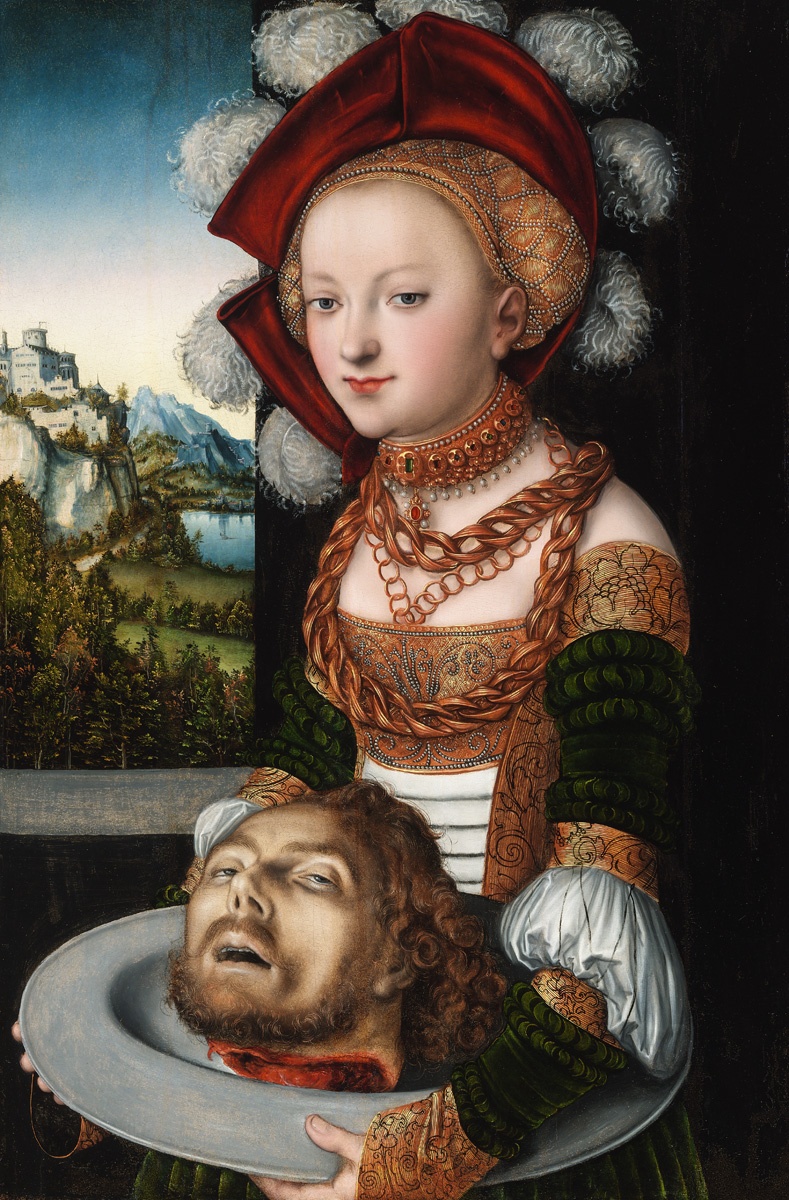The painter prince of the Protestant Reformation, Lucas Cranach was a close friend of Martin Luther, and also the godfather to his children. He made the illustrations of Luther’s Bible translations, just as he did his portraits and allegories of his theses. Still, he had no qualms about providing his Catholic clients with pictures suiting their own faith, nor did he baulk at ribald subjects. Of course, we can if we wish interpret his piquant works as moral parables, which point out man’s destiny if he surrenders to his lecherous desires. Indisputably, though, the host of Salomes, Judiths and other demonic women of fate that swarmed from Cranach’s studio owed their popularity rather to their thrilling sensuality. They are icy, sadistic and triumphant, in the extreme attire of classy ladies of the time, and what is more they are endowed with the facial features of the illustrious beauties of the Wittenberg court. Salome’s name is not mentioned in the Bible; her bizarre cult was born only in the sixteenth century, to be revived by the decadent aesthetics of the late nineteenth century. Strictly speaking she was little more than a tool for her mother Herodias to get revenge on Saint John the Baptist, who had spoken out against her sinful relationship with the king. The payback came during a banquet, when Salome performed a maddening dance, and prompted by her mother, asked the spellbound king for her reward: John’s death. She then handed her mother the disembodied head on a platter.Axel Vécsey
en

